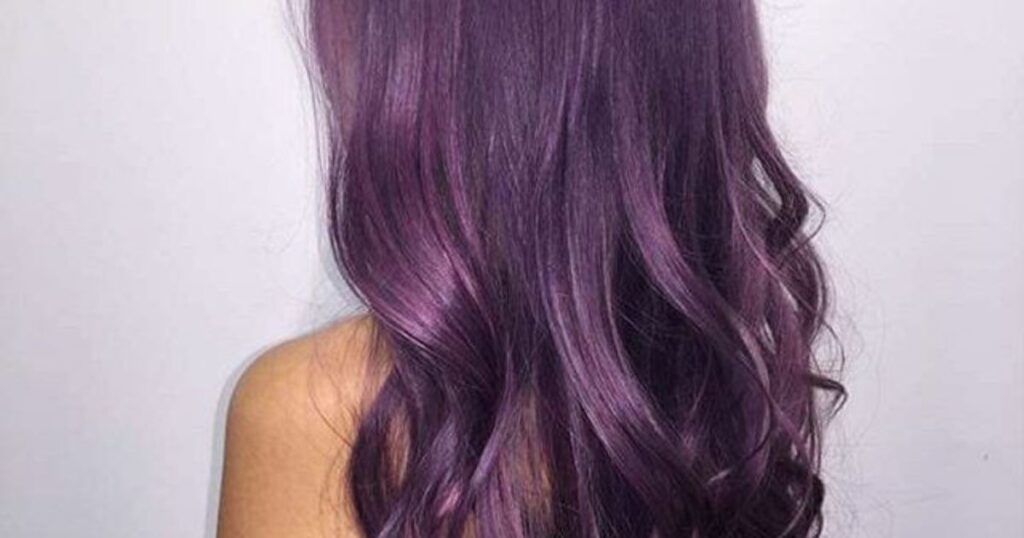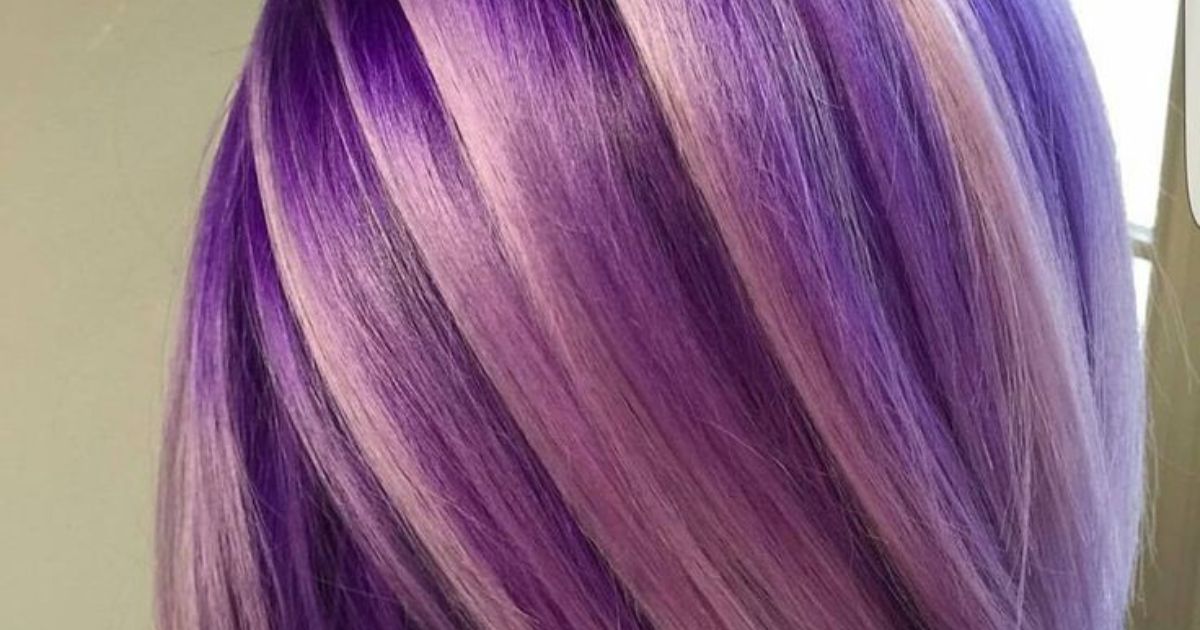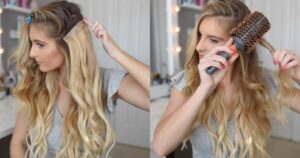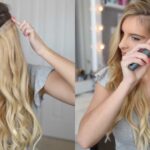When it comes to changing your hair color after having purple hair, it can be a bit tricky. Purple hair dye, with its vibrant and rich hues, can be challenging to cover up or transition from. Whether you’re looking to return to your natural color or experiment with something new, it’s essential to understand the principles of color theory, proper hair care, and the specific steps involved in the process. In this guide, we’ll explore how to color over purple hair, take care of your purple hair, and what colors can cancel out purple.
How to Color Over Purple Hair Dye?
To successfully transition from purple hair to a new color, you’ll need to follow a few key steps:
Assess Your Current Hair Shade
Before diving into a new hair color, you must understand your current shade of purple. Is it a vibrant and deep purple, or has it faded to a pastel hue? The intensity of your purple hair will affect the color you choose to cover it.
Choose the Right Color
Selecting the right color to cover purple hair is crucial. In most cases, you’ll want to opt for a color that’s on the opposite side of the color wheel. Green is the complementary color of purple, which means it can help neutralize the purple tones. However, if your purple hair has faded to a more pastel shade, you might need a different approach. If you’re looking to add length and volume to your hair, you may also consider hair extensions as an option.
Pre-lightening
If your purple hair is very vibrant or dark, you may need to pre-lighten it before applying the new color. Pre-lightening will help remove some of the purple pigment, making it easier for the new color to take hold. This step is essential when transitioning to a significantly lighter shade.
Apply the New Color
Follow the instructions on your chosen hair dye product to apply the new color evenly. Make sure to saturate your hair thoroughly and leave the dye on for the recommended time.
Rinse and Condition
Follow up with a cold water rinse to help seal the cuticle and lock in the new color.After the dye processing time, rinse your hair thoroughly and apply a color-safe conditioner to keep your hair healthy and vibrant
Purple Hair Care Guidelines
| Care Aspect | Description |
| Shampoo and Conditioner | Use sulfate-free, color-safe shampoo and conditioner specifically formulated for colored hair to prevent fading. |
| Water Temperature | Wash with cool to lukewarm water, as hot water can strip the color and make it fade faster. |
| Frequency | Limit washing to 2-3 times a week to avoid over-stripping natural oils and color. Use dry shampoo between washes. |
| Hair Products | Choose styling products that are sulfate and alcohol-free to maintain color vibrancy. |
| UV Protection | Use UV-protective hair products or wear a hat when exposed to direct sunlight to prevent color fading. |
| Color Refresh | Consider a color-refreshing conditioner or hair mask to revive the purple hue between salon visits. |
| Deep Conditioning | Use a deep conditioning treatment once a week to keep hair healthy and hydrated. |
| Heat Styling | Use heat protectant spray before using heat styling tools to prevent damage to colored hair. |
| Avoid Chlorine | Minimize exposure to chlorinated water, or wear a swim cap when swimming to prevent discoloration. |
| Trim Regularly | Trim your hair every 6-8 weeks to remove split ends and keep your hair looking fresh. |
| Consult a Professional | Visit a hair salon for regular touch-ups and expert advice on maintaining your purple hair. |
| Gentle Hair Care | Be gentle when brushing and styling to minimize breakage and preserve the color. |
| Healthy Diet | A balanced diet with vitamins and nutrients can contribute to overall hair health and color retention. |
| Avoid Over-Washing | Over-washing can strip the color, so use dry shampoo and gentle cleansing methods when possible. |
Remember that the specifics of purple hair care can vary depending on the shade of purple and the type of dye used, so it’s always a good idea to consult with your stylist or colorist for personalized advice.
What Color Cancels Out Purple?
If you’re looking to cancel out purple hair, you’ll want to choose a color that’s opposite to purple on the color wheel. In this case, green is the complementary color to purple. However, it’s important to remember that if your purple hair has faded to a pastel shade, the complementary color might not be enough to cover it effectively. You might need to opt for a darker, more neutral shade to fully mask the remaining purple tones.
How to Fade Purple Before Applying a New Color
If you want to fade your purple hair before applying a new color, there are a few methods you can try:

Clarifying Shampoo:
Use a clarifying shampoo to help strip away some of the color. These shampoos are designed to remove product buildup, including hair dye.
Vitamin C Treatment:
Crush vitamin C tablets and mix them with anti-dandruff shampoo. Apply this mixture to your hair and leave it on for 30-60 minutes. The vitamin C can help fade the color.
Hot Oil Treatments:
Regular hot oil treatments can help open up the hair cuticle and allow some of the color to escape.
Baking Soda Paste:
Make a paste using baking soda and water, apply it to your hair, and leave it for 15-20 minutes. Rinse thoroughly. This can help lighten the color.
Professional Color Removal:
If your purple hair is very stubborn, consider consulting a professional colorist for a color removal treatment.
Why Did My Hair Dye Turn Purple? 2 Possible Reasons and Solutions
If your hair dye unexpectedly turned purple, there are a couple of potential reasons for this phenomenon:
Residual Purple Pigment:
If you had previously dyed your hair purple, there might still be some residual pigment left in your hair. When you applied a different color, it mixed with the remaining purple, resulting in an unexpected shade. To fix this, you may need to use a color remover or bleach your hair before applying the new color.
Color Interference:
Sometimes, mixing colors can lead to unexpected results. If you combined two hair dyes with different chemical compositions or color bases, they could interact and produce an unintended hue. To prevent this, stick to one brand and color base for consistent results.
Can I Use a 20-Volume Developer to Darken My Hair? Or a 30-Volume?
The choice of developer volume depends on the level of change you want to achieve. A 20-volume developer is typically used to lift one or two levels or to cover gray hair. If you want to darken your hair, you can use a 20-volume developer to deposit color.
However, if you’re looking for a more significant change, like going several shades darker, you might opt for a 30-volume developer. Keep in mind that higher volume developers are more potent and can be harsh on your hair. It’s essential to be cautious and consult with a professional if you’re unsure about the best developer for your specific hair needs.
How to Touch Up Red Hair When It Fades? You Have 3 Options
Red hair can be particularly prone to fading. To touch up your red hair when it loses its vibrancy, consider these three options:
Semi-Permanent Red Dye:
If the fading is minimal, you can use a semi-permanent red hair dye to refresh the color. Semi-permanent dyes are less harsh and can add a subtle boost of color.
Permanent Red Dye:
For more significant touch-ups or when the color has faded considerably, opt for a permanent red hair dye. This will provide long-lasting and vibrant results.
Color-Depositing Conditioner:
Color-depositing conditioners are an excellent way to maintain red hair between full dye applications. They help revive the color and extend the time between touch-ups.
How Long to Wait to Wash Hair After Semi-Permanent Color?
After applying semi-permanent hair color, it’s generally advisable to wait at least 24-48 hours before washing your hair. This allows the color to set and penetrate the hair shaft. Washing your hair too soon can cause the color to fade prematurely. When you do wash your hair, use a color-safe shampoo and cold water to help preserve the color.
Why Are My Roots Not Taking Color? It Has to Do with These Two Reasons
When your roots don’t take color as well as the rest of your hair, it can be frustrating. There are two main reasons for this issue:
Natural Oils:
The oils produced by your scalp can create a barrier that hinders the absorption of hair dye. To counter this, make sure your hair is clean but not excessively oily before applying color. Shampoo your hair a day or two before dyeing, not immediately before.
Different Porosity:
The hair at your roots might have different porosity than the rest of your hair. This can affect how color is absorbed. To ensure more even color application, consider pre-lightening your roots slightly before applying the dye.
Does Manic Panic Work on Dark Hair Without Bleaching?
Manic Panic is a popular brand for vibrant, semi-permanent hair dyes. While it works well on light hair, it can be challenging to achieve the same vibrancy on dark hair without bleaching. The color may appear as a tint or subtle highlight rather than a bold, vivid hue.
For Manic Panic to work effectively on dark hair, it’s often necessary to bleach your hair first. Bleaching lightens your hair and allows the Manic Panic color to show up more prominently. However, keep in mind that bleaching can be damaging to your hair, so it’s crucial to take proper precautions and consult with a professional if you’re unsure about the process.
FAQ’S
Can I dye my purple hair another color?
Yes, you can change the color of your purple hair, but it will depend on the current shade of purple and the color you want to achieve.
What color can I put over faded purple hair?
Faded purple hair can be covered with darker shades like brown, black, or other dark colors, or you can reapply a different shade of purple.
How do I go from purple to blonde or light colors?
Going from purple to blonde or light colors may require bleaching to remove the purple pigment, followed by toning to achieve the desired shade.
Can I go for a pastel color over my existing purple hair?
You can create pastel shades over purple hair by diluting the pastel color with a conditioner or using a specific pastel hair dye.
Is it best to consult a professional for color changes on purple hair?
Yes, it’s recommended to consult a professional colorist for major color changes to ensure the best results and hair health.
Conclusion
Changing your hair color after having purple hair can be a bit tricky, but it’s doable with the right steps. First, assess your current purple shade, choose the appropriate color to cover it, and consider pre-lightening if needed. Good purple hair care, like using sulfate-free products, UV protection, and regular deep conditioning, is vital for vibrant color. If you want to cancel out purple, go for green, but for faded purple, you might need a darker shade.
If your hair unexpectedly turns purple after dyeing, it could be due to pigment or color interference, requiring color removal or consistent product use. When making significant changes, consult a professional for the best results and hair health. For various color changes and touch-ups on purple hair, it’s best to consult a professional colorist. They can help you achieve the desired results and maintain the health of your hair.











